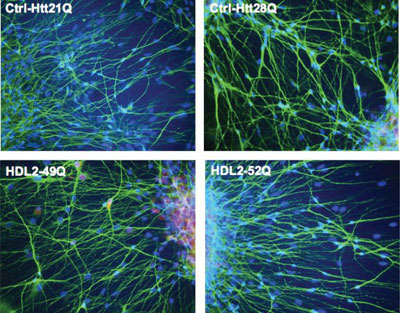The role of junctophili-3 (JPH3) in neurons- comparison to chorein (VPS13A)

Doda Rudnicki, Johns Hopkins University
Huntington disease-like 2 (HDL2) is caused by a CTG/CAG repeat expansion on chromosome 16q24.3. Three nonmutually exclusive mechanisms have thus far been implicated in the pathogenesis of the disease: 1) loss of expression of full-length JPH3 protein [1]; 2) toxic expression of a JPH3 splice variant containing an expanded CUG repeat [2]; and 3) toxic expression, from the strand antisense to JPH3, of a cryptic transcript containing a CAG repeat and encoding polyglutamine [3]. HDL2 provides a striking opportunity to explore the pathogenesis of other neurodegenerative diseases with which it shares genetic, clinical and/or pathological features, including Huntington’s disease (HD) and neuroacanthocytosis (NA) syndromes [4, 5]. For example, our studies of HDL2 and HD proteome in human brain tissue have identified a number of pathogenic pathways that may be shared between the two diseases (Ratovitski et al., submitted). In addition, bi-directional transcription in HDL2 have prompted us to examine and confirm the role of an antisense transcript, as well as toxicity of the sense transcript in HD pathogenesis [6, 7]. Based on the success of such parallel studies of HDL2 and HD, here we propose to begin exploring the hypothesis that, in a similar fashion, the loss of function of JPH3 may, at least in part, share downstream mechanistic similarities with the loss of function of vacuolar protein sorting-associated protein 13A (VPS13A) in chorea-acanthocytosis (ChAc). The experiments in this proposal are designed to 1) provide preliminary data that would allow us to develop additional projects focused on the role of JPH3 in neurons; 2) preliminarily test the hypothesis that ChAc and HDL2 may share some aspects of neuropathogenesis.
Download the full PDF of the Rudnicki report here. SaveSave
|